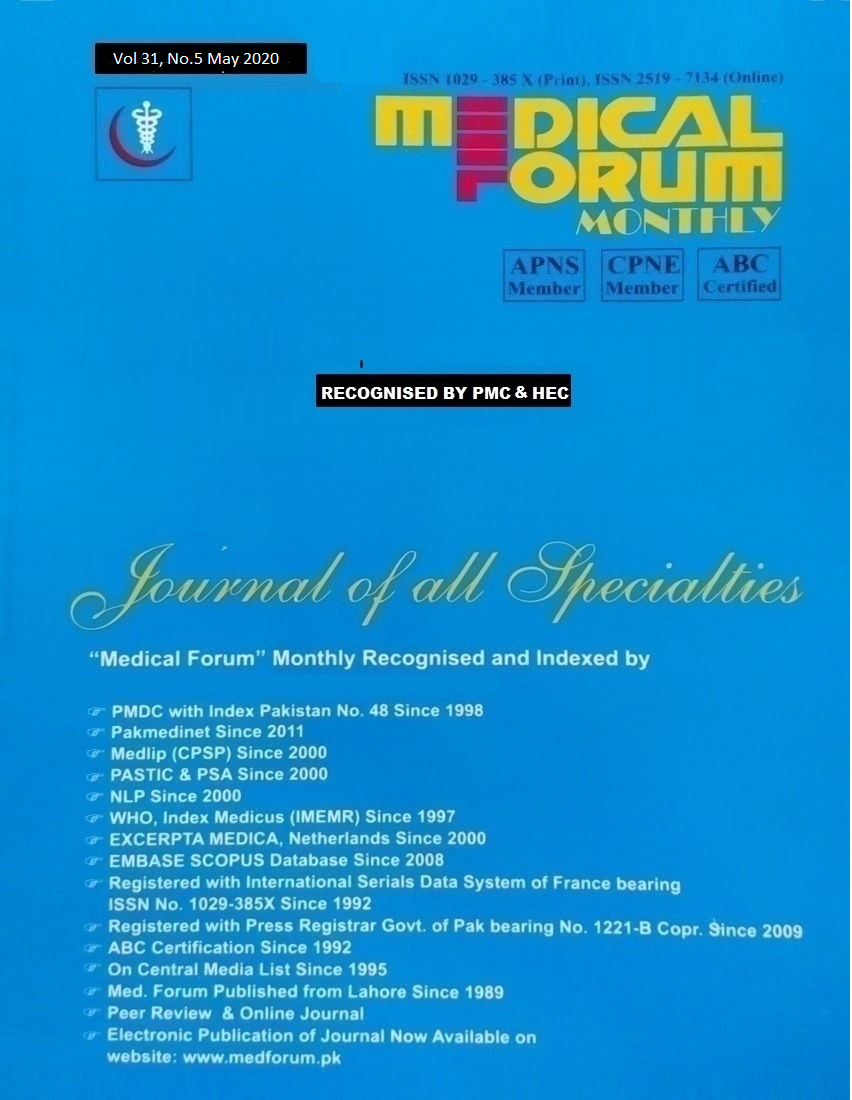
13. Impact of Nuchal Cord on Perinatal Outcome and Mode of Delivery - A Survey at Tertiary Care Hospital
Shereen Sukhan, Drakhshan Nauman, Nadia Saif, Faiza Saghir and Fareeha Farooq
ABSTRACT
Objective: To determine frequency of nuchal cord, its association with mode of delivery and perinatal outcome in newborns with nuchal cord.
Study Design: Descriptive case series study.
Place and Duration of Study: This study was conducted at the Department of Obstetrics and Gynaecology, Unit-2, Sir Ganga Ram Hospital, Lahore from 30-04-2014 to 29-10-2014.
Materials and Methods: All 210 patients fulfilling the inclusion/exclusion criteria presenting to Obstetrics and Gynaecology, Unit-2, Sir Ganga Ram Hospital, and Lahore were included in the study after informed consent. After complete history and physical examination,Doppler USG was carried out in all patients to diagnose the presence or absence of nuchal cord. All the patients were given trial of labour with continuous electronic fetal heart rate monitoring. Mode of delivery was decided by the researcher and mode of delivery noted.Presence or absence of nuchal cord also noted at time of delivery. Demographic data and outcome in all patients was recorded on pre-designed questionnaire.Perinatal outcome assessed by noting APGAR score at 1 min and 5 min and neonatal NICU admission, in nuchal cord group.Data was analysed using SPSS version 16. P- vlue < 0.05 was taken as significant. Mean and standard deviation was calculated for age and gestational age. Chi square was used to compare mode of delivery in patients with or without nuchal cord. P value less than or equal to 0.05 was considered significant. Data was stratified for parity and type of nuchal cord to see the effect of these variables on the outcome. Chi square test was used post-stratification with p value < 0.05 considered as significant.
Results: Total deliveries during study period were 210.Total 34 patients were diagnosed of having cord around neck so calculated incidence of cord around neck in our study is 16.2 %.Mean age of the patients was 27.04±2.5 years. Mean gestational age was 38.20±1.12. Out of 210 patients, 81 patients (38.6%) were primigravida while 129 patients (61.4%) were multigravida. Nuchal cord was present in 34 cases (16.2%). Out of these 34 cases of nuchal cord, 24 cases of loose nuchal cord and 10 cases of tight nuchal cords were observed. Caesarean section was carried out in 29 patients.7 caesarean sections done in patients with nuchal cord and 22 sections done in patients without nuchal cord. Vaginal delivery was done in 181(86%) patients including 2 vaccuum deliveries .Out of 34 patients with nuchal cord, vaginal delivery was achieved in 27 (80%) patients and caesarean section was done in 7 cases (20%). This showed p-value of 0.210 (non significant).
Conclusion: This study suggests that nuchal cords occur commonly, loose or tight nuchal cords is not associated with increased chances of caesarean section and adverse perinatal outcome. Doing elective caesarean section in such cases only increases maternal morbidity without significant difference in neonatal outcome.
Key Words: Perinatal outcome, Nuchal cord, Caesarean section, APGAR score
Citation of article: Sukhan S, Nauman D, Saif N, Saghir F, Farooq F. Impact of Nuchal Cord on Perinatal Outcome and Mode of Delivery - A Survey at Tertiary Care Hospital. Med Forum 2020;31(5):53-56.
